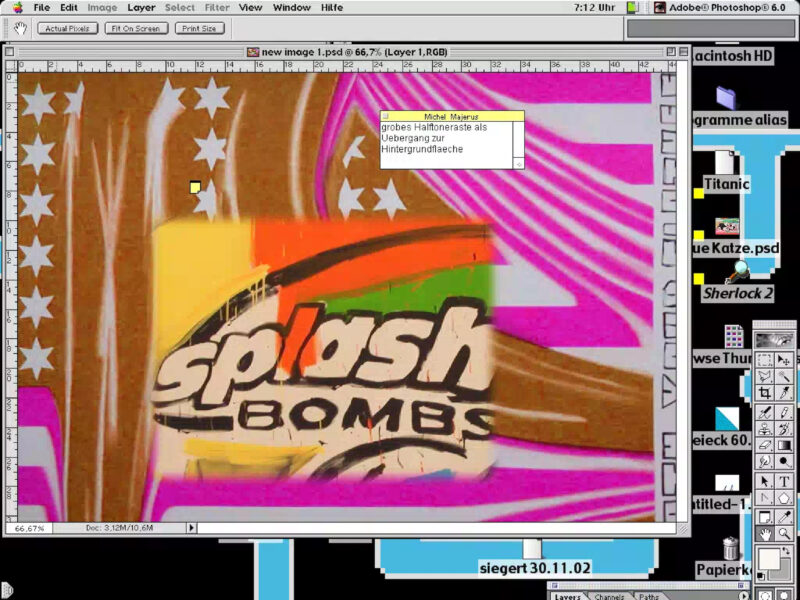The sharp, bright screen of the iPad, the last marvel with which Steve Jobs dazzled the world, may be seductive, but few would argue that typing on its virtual screen is the most practical way to produce work. Yet I have been writing articles with it for months now. Why? I could give all kinds of practical reasons, but they would be lies. The truth is that I am captivated by the beauty of this piece of technology.
My feelings about this particular Apple creation are, to be honest, quite bonkers. I have never felt this way about a piece of machinery before. “Machinery”? That seems inappropriate, like calling Michelangelo’s David a hunk of stone.
The exquisite luxury of the iPad grows out of a tradition of Apple design that has repeatedly reshaped modern culture. This is one reason why Apple products are favoured by those who work in the arts and humanities – they look great. The other reason, of course, is that they are damn easy to use. But it is the aesthetic originality of Apple that has reshaped the way we live in the modern world.
The first Apple computer in our household was a Mac Classic, and at the time, its smooth whitish box with a big colourful Apple logo on the side seemed gloriously futuristic – and yet, not in the least bit techno. This was what was revolutionary about Apple, this soft-machine aesthetic.
If you want to know how Apple remade the look of the future think of Gary Numan. In the early 1980s Numan’s jerky robotic persona and image of an alienated future where everyone sits sealed in cars was state of the art. This was how the techno age would look, once Alan Sugar took the Amstrad to the next level. Nowadays Numan is retro, as are all such silvery glimpses of an icy future, for Apple changed the way history was headed when it created machines that, instead of chilling you out, glow like fireplaces and nuzzle like digital pets.
Soft lines, not sharp ones, define the Apple aesthetic. Even its glossiest and sleekest metal-cased laptops or giant screens have rounded corners. The Apple logo in itself, at once natural in its associations and reassuringly warm when it glows on the cover of your laptop, is round and curvy. The way light is used – pale and silvery, it tells you the laptop is coming alive – communicates a living, continuous technological presence, friendly and nurturing.
When Apple launched the iMac in 1998, the first personal computer to be hailed as a design classic, its style took a bold twist. The blue or orange or purple translucent shells of these machines, tapering to a round rear casing, invented a new kind of futurism – organic, softly moulded, cheekily colourful. This was a computer for a bubble house. It proved ephemeral (I had one for a while), but it showed how gorgeous a domestic design can be. Since then, everything from kitchen tools with chunky plastic handles in crazy shapes to Doctor Who’s Tardis have imitated the pleasantly contoured future of Apple. It has inspired pod-like structures in architecture and touch-sensitive, slim-screened home entertainment devices although, in truth, I have yet to see the TV or contemporary building that portrays the future as brightly as an iPad.
The real achievement of Apple goes to the very heart of aesthetics and the loftiest ideals of design. In the 19th century, radical critics of industry such as John Ruskin and William Morris denounced the grim, turgid, pretentious objects that cluttered Victorian homes. Good design, they argued, was a moral duty, and a world in which ugliness ruled must be profoundly wrong in its social order. Apple conveys this message in a relaxed, west coast way. In our age, the power of the internet might seem to lead away from the physical, real, human world, into a dystopia of lost souls staring into screens. The real brilliance of Apple is to make digital culture human, and to keep it in the swim of life.
The rise of the Apple aesthetic went along with the rise of coffee shops, the idea that work and leisure can combine in new ways. The iPod, the iPhone, the iPad: none of them are designed to keep you at home, addicted to the virtual. They are made to be carried about, used in cafes and on the bus, wherever you happen to be. Perhaps the greatest insight of Steve Jobs, when it came to design, was that the most beautiful, marvellous creation on earth is not the computer, but the person using it. The Apple aesthetic is profoundly humanist – and in this sense it has truly made the world a better place.
Will there be an Apple robot one day, and will it be called an iRobot? Much as Isaac Asimov might have enjoyed that, the dark warnings of science fiction writers like him seem to melt away when you fall in love with Apple. There seem many reasons right now to fear the future. But when I survey the latest troubling news on the magic screen of the iPad, somehow I am not afraid. Right here in my hand is the proof we can make it.
guardian.co.uk © Guardian News & Media Limited 2010
Published via the Guardian News Feed plugin for WordPress.









